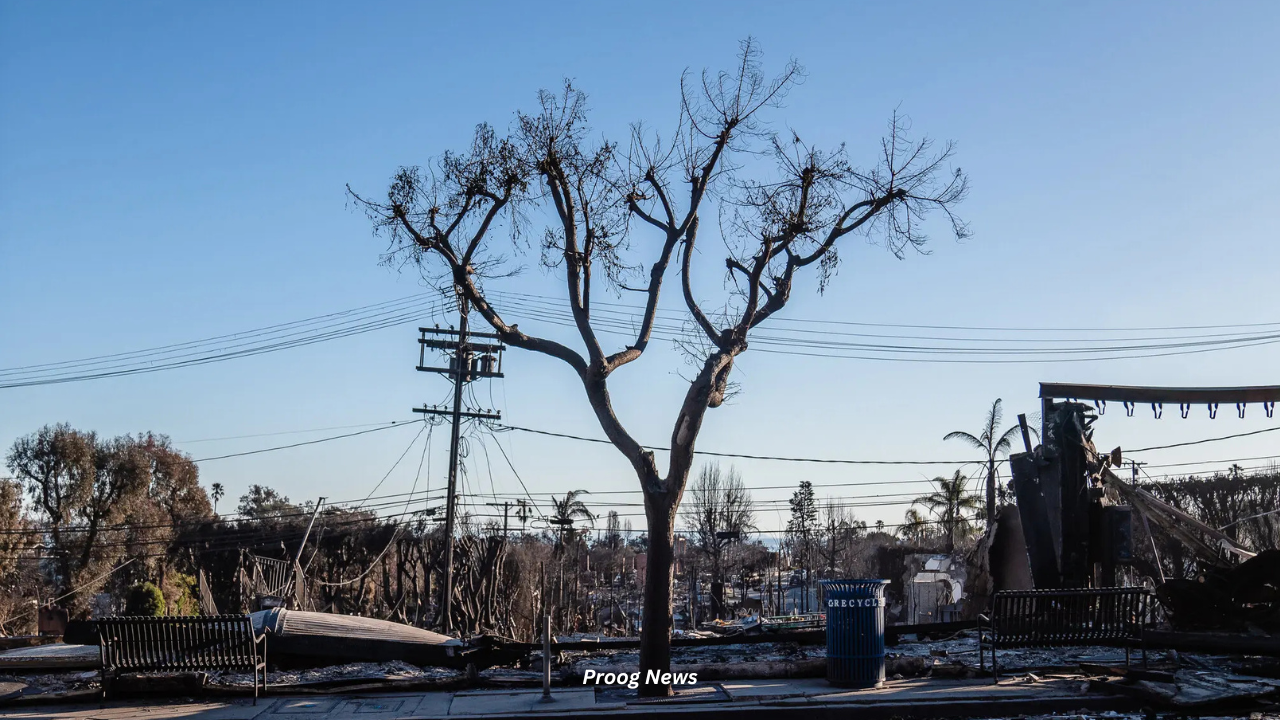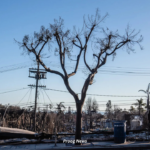A wealthy Los Angeles neighborhood was an economic lifeline for many service workers, but the fires have cut it off.
People who waded through rush-hour traffic on the 405 Freeway or the Pacific Coast Highway every morning to do service work in the Pacific Palisades neighborhood of Los Angeles made it comfortable and shiny.
That’s why Elvis Sandoval and the other workers, who were mostly Latino immigrants, felt like they were part of the community. They mowed the lawns, cleaned the living rooms, folded the laundry, watched the kids, and did many other things that made life by the ocean so nice.
Now, though, thousands of homes and many businesses in the area are gone, along with “all of our work,” said Mr. Sandoval, 43, who owns a landscaping business and came to the U.S. from Mexico. For more than 20 years, he has taken care of lawns and gardens and built big landscaping projects for people in Pacific Palisades.
People who lost their lives or their homes, schools, and communities in the fires that are still destroying Greater Los Angeles are not the only ones who have been hurt. Service workers have lost their jobs because of the fires. Many of them were already barely hanging on to their rung on California’s steep economic ladder.
Maegan Ortiz, the head of the non-profit group Instituto de Educación Popular del Sur de California (IDEPSCA), said, “There’s no safety net for these workers.” The group helps day laborers, who often depend on jobs in nice areas like the Palisades. “Things are going to be very, very bad for a long time,” Ms. Ortiz said.
When Mr. Sandoval was 21, his new business got its first big break in the wealthy neighborhood of Pacific Palisades. People quickly told each other about his services. Before Tuesday, his 12 employees—some who just moved here recently and some who have been here for years—worked on more than a dozen private properties and took care of the median gardens on Sunset Boulevard as part of a contract with a local group that makes the area look better. Some of them are friends from Mexico where he grew up.
Right now, Mr. Sandoval said in Spanish, “Unfortunately, we’re going to have to let people go.”
That’s just a small part of the job market. The Latino Policy and Politics Institute at U.C.L.A. says that about 10,000 Latinos worked in the Palisades evacuation zones. That’s 34% of the people who worked there. About 20,000 more Latinos worked in the areas where people were told to leave because of the Eaton fire, which was east of downtown Los Angeles and near Pasadena.
Someone from IDEPSCA, Ms. Ortiz, has been calling workers they helped during a different wildfire in December to see how they are doing this time. Seventy of them said they had lost their jobs. One worker only got pictures of the construction site where he had been working before the fires from his boss over the weekend. The house is now just a mess.
They said that many more of them had not heard from their bosses yet.
There hasn’t been much need for landscapers and other workers at the group’s five day labor centers over the last week. The number of people working at the support stations near hardware stores that IDEPSCA uses to give water to day laborers is also going down.
The main office of the organization has been turned into a disaster response center. More than 100 workers who lost their jobs because of the fires are there looking for food, baby formula, and diapers.
It has been very hard on Latino communities. People who live in mostly Latino neighborhoods are almost three times more likely to work outside in farming, landscaping, or construction, where they are exposed to wildfire smoke, than people who live in mostly white neighborhoods. Also, they are a lot less likely to have health insurance or go to the doctor when the effects start to show.
There aren’t many Latinos living in the areas where the Eaton and Palisades fires happened, but a lot of Latinos come to work there from other places.
A few people in the Pacific Palisades chose to stay put last week, even though Sunset Boulevard was blocked by long lines of cars. And then there were the housekeepers and gardeners who were still working in the cloudy sun.
As a form of firefighting, some of Mr. Sandoval’s workers sprayed the walls and tiled roof of a client’s house out of town with a garden hose. At one point, they took water from the pool. The house made it.
He has been getting calls from other clients who did lose their homes since then. His workers now only have so many hours to work, and he has moved them to jobs outside the fire zone. But Pacific Palisades was only a third of his business.
Fires in the area in the past are a sign of the problems that day laborers and short-term hires who do physical work like landscaping or construction will face in the future.
Parts of Los Angeles County were destroyed by the Woolsey fire in late 2018. Two years later, Ms. Ortiz said, the day labor force still hadn’t fully recovered, and her organization was still working with foundations and private donors to help people pay their rent and get other help.
“If it took two years for workers to get even slightly better after that one fire,” she said, “then it could take “at least five years” for them to get better after these fires.
In the meantime, she said that workers would get paid less and be more likely to be exploited.
“This has to do with workers being desperate and employers maybe taking advantage of that,” she said.
In addition to the economic pain, there is the trauma of crackling flames, scary escapes, and real loss for workers who had been with the same employers for years.






